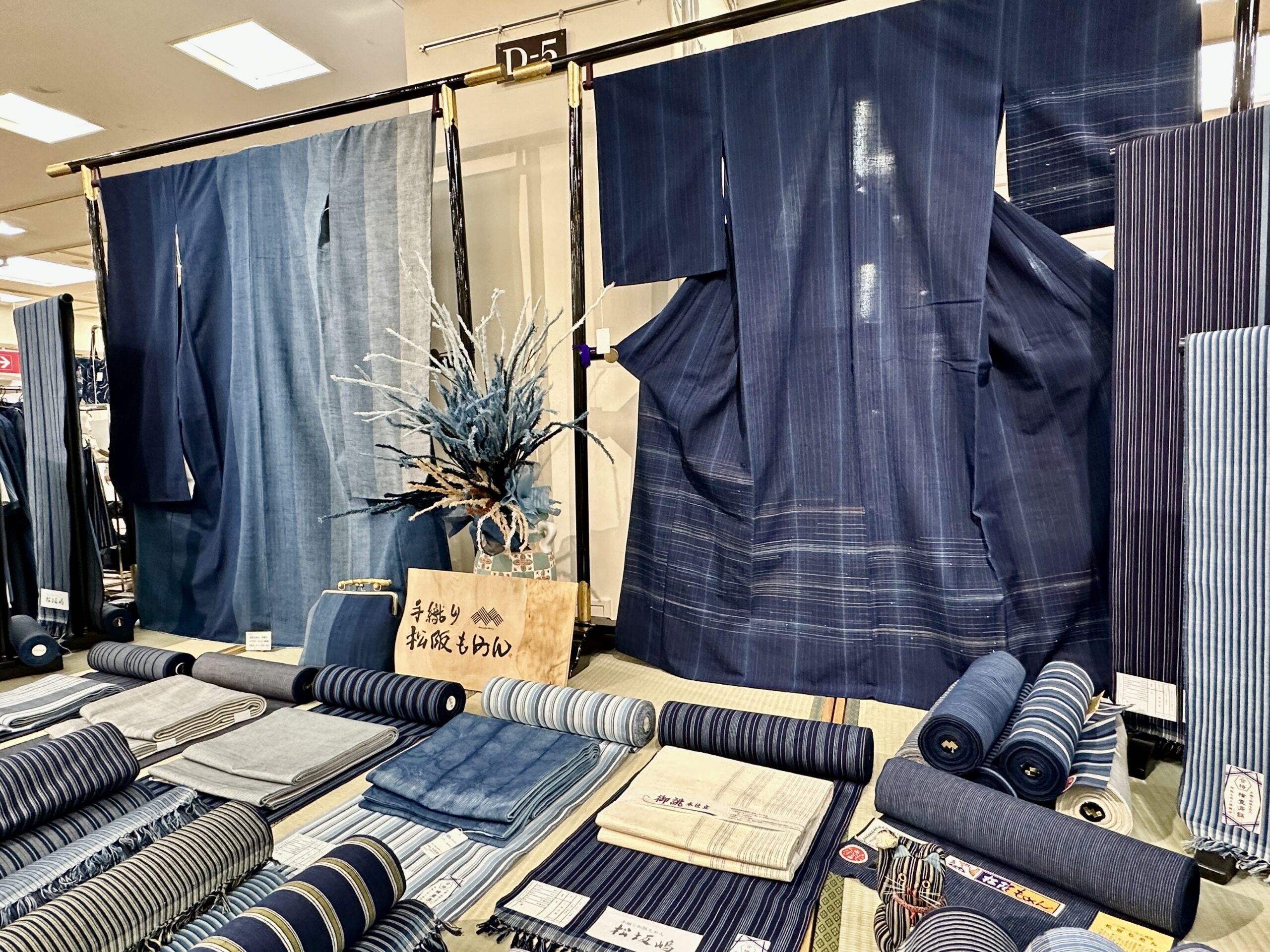松阪木綿
Pronunciation: Matsusaka-momen
Production area: Matsusaka City, Mie Prefecture
Matsusaka-momen is a cotton textile characterized by striped patterns woven with yarn pre-dyed using natural indigo. Production began in the early Edo period, and thanks to the Matsusaka merchants who expanded into Edo, it became extremely popular under the names Ise Cotton or Seishu Cotton. In Nihonbashi Ōdenmachō in Edo, many cotton wholesalers from Ise Province gathered, and this scene was even depicted in ukiyo-e prints by Utagawa Hiroshige. During the Edo era, sumptuary laws restricted the wearing of lavish kimono. Against this backdrop, Matsusaka Cotton, which appeared plain from a distance but revealed chic, intricate stripe patterns up close, captivated the fashionable townspeople of Edo. The origin of its distinctive vertical stripes is said to trace back to Ryujofu, a fine striped cotton fabric brought from Annam (present-day Vietnam), with patterns resembling the veins of willow leaves. Although it flourished for centuries, Matsusaka-momen declined in the Meiji period due to the influx of inexpensive imported fabrics and the growing adoption of Western clothing.




















